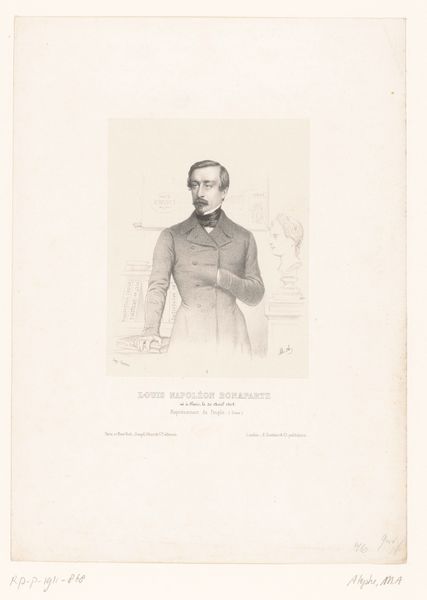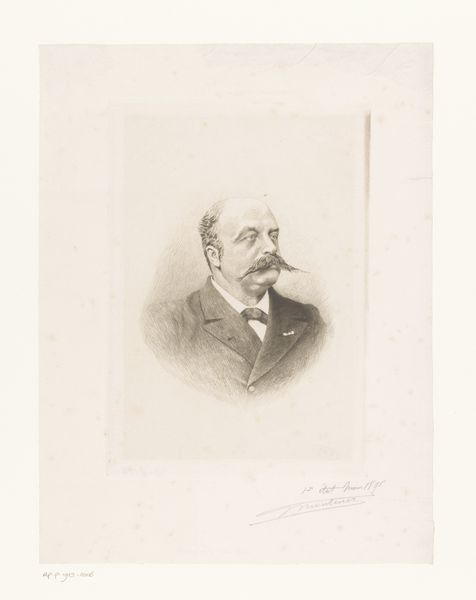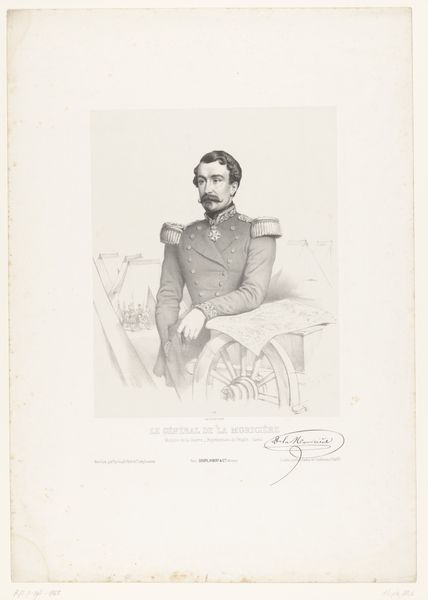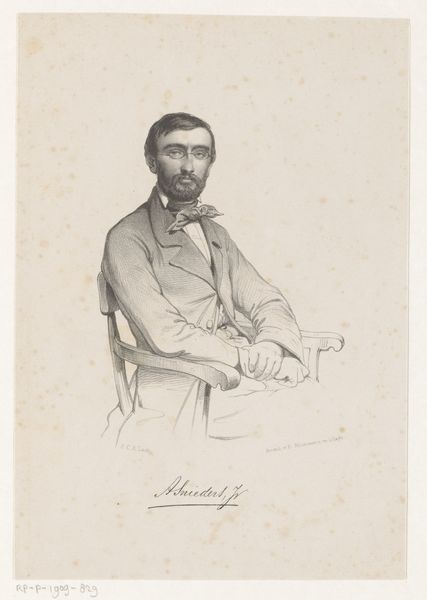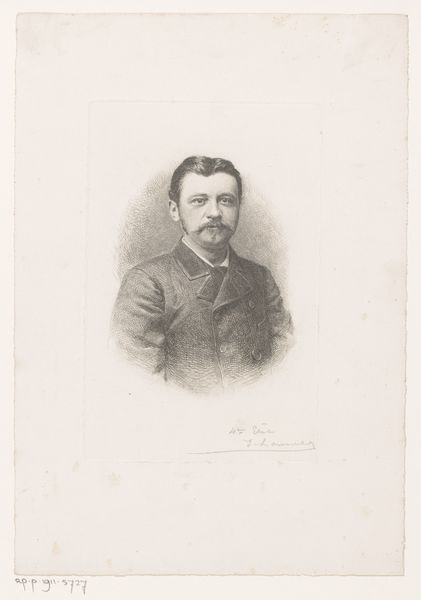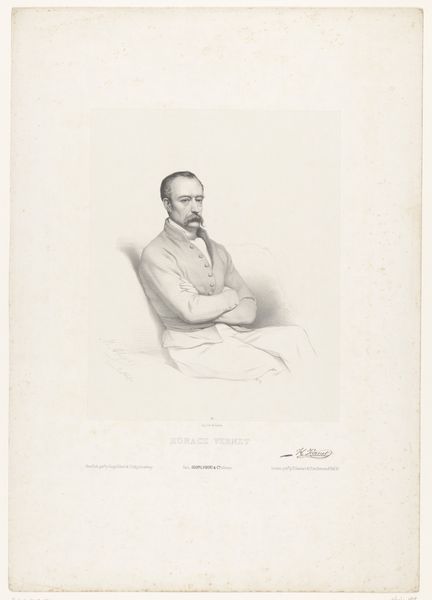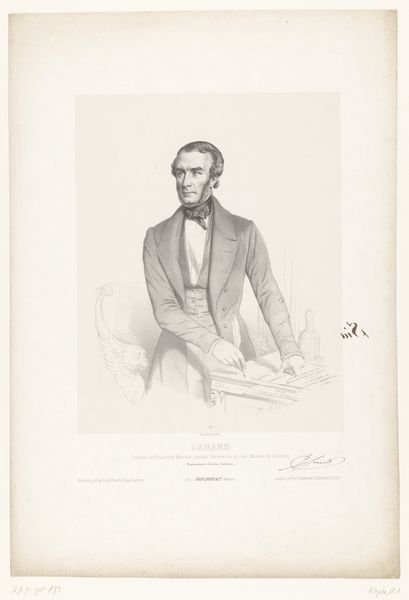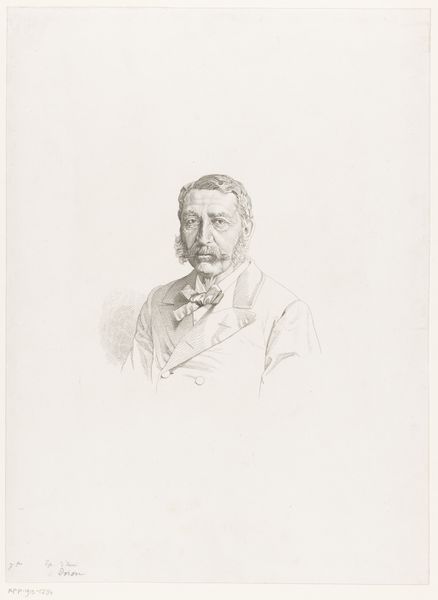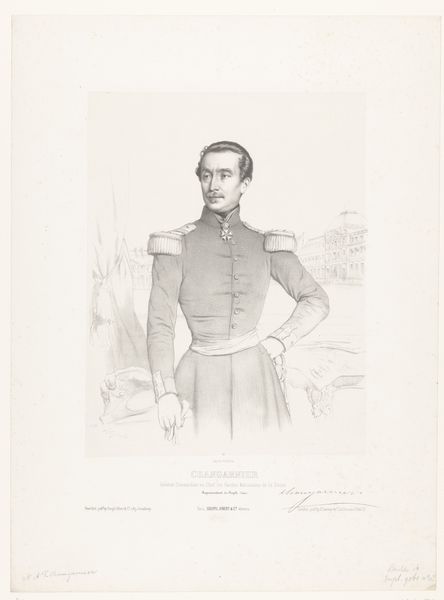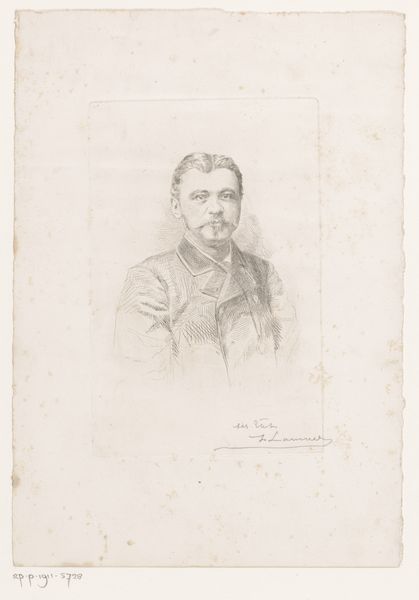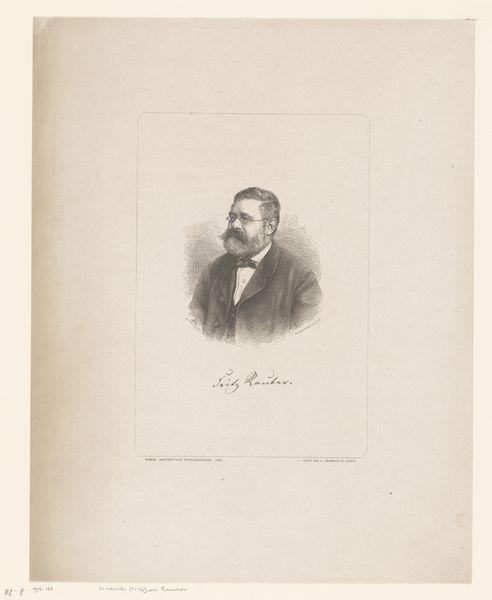
print, engraving
#
portrait
# print
#
romanticism
#
academic-art
#
engraving
Dimensions: height 484 mm, width 338 mm
Copyright: Rijks Museum: Open Domain
Curator: Before us hangs an engraving from 1848, "Portret van minister Jules Bastide," by Marie-Alexandre Alophe, now held in the Rijksmuseum collection. Editor: Ah, there’s an aura of quiet confidence here. The greyscale lends it such seriousness, a formality that makes me feel I ought to know who he is, feel like I recognize him. It's well crafted, meticulous in the details of dress and desk clutter, yet… it feels… still. Curator: Precisely, a world holding its breath before some monumental event. You’ve captured its temporal feel—it exists in the space of potent possibility. The piece employs the detailed lines of engraving to construct the image of Jules Bastide, a prominent figure, perhaps a minister, during a tumultuous time in France. Editor: It’s like his story’s being etched into the metal itself, this painstaking process adding another layer of intent, permanence almost, or at least the aspiration of it. Notice the globe positioned behind him: it invites the idea that we see the bigger picture, as a reflection of someone dealing with larger affairs of state. What's your view on its romantic flair? Curator: I think Alophe here balances both the realistic and the Romantic well. Observe the clean, smooth lines against the darker tones defining his facial features, instilling both physical and intellectual energy, though there remains that undercurrent of longing for something perhaps unattainable. I’m interested in the staging more: Bastide isn’t merely posed but situated in an environment designed to reflect his status. Editor: Yes! He’s part of a very deliberately constructed composition. Everything has meaning. The papers, the globe, even his relaxed-yet-poised posture. What does that specific "Romantic" bent do to alter the factual account we might otherwise draw from a piece like this? Curator: It’s interesting. What initially feels like mere recording—becomes through the subtle idealizations an almost symbolic declaration, elevating Jules Bastide beyond the purely biographical to stand, perhaps, for enduring principles or hopes that Romanticism, in its most politically engaged form, aspired to make manifest. It speaks to the human capacity to seek truth, meaning, or maybe an idea, something past the subject themselves. Editor: I see him now not only as a minister, but as an ideal—an individual wrestling with matters greater than himself, embodied in an image that transcends a moment and speaks, in hushed tones, to something more resonant. It reminds us of the stories and visions we etch onto each other.
Comments
No comments
Be the first to comment and join the conversation on the ultimate creative platform.
